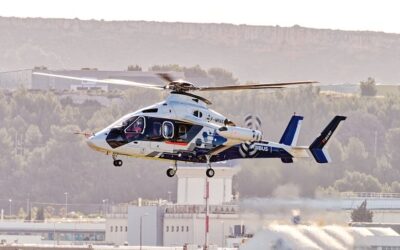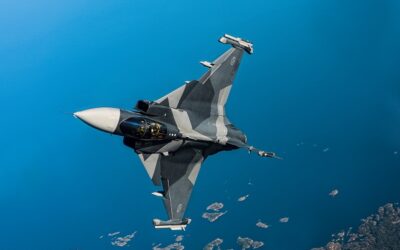Discussing trends in detector development
Detector technology is literally at the heart of the infrared and visible imaging capabilities on which an already huge and still growing number of military airborne, ground based and maritime systems depend, and MONS caught up with Claire Velantin, Marketing Vice-President with Sofradir at the 2017 Paris Air Show to discuss trends in detector development. These focus on increasing performance while reducing their Size, Weight and Power (SWaP) footprints.
As in many other areas of enabling technology, military applications benefit from the wider market for high-performance imaging devices in other areas and Sofradir also develops detectors for the space market, for example, and is looking to address the industrial process control market.
“We have all the technologies we need to cover the whole spectrum of applications”, said Valentin, an optical engineer by training. “In space we are number one in the world – we have a lot of detectors in space. We continue to develop a large format to detectors for observation. For defence we are focusing on a new product that we have just launched based on 10µm pitch.”
Pixel pitch is the distance between equivalent points on adjacent detector elements on the focal plane array chip, and is a major contributor to SWaP reduction. “The today is 15 µm pitch”, she said. “We work to reduce the pixel pitch in order to extract more resolution from the same size of focal plane array, meaning that we are able to improve the range of the optronic system.”
Alternatively, an array of a given pixel count can be made smaller and enables the whole optical train to be made smaller and lighter and consume less power. A further option is to increase the size of the detector array to get a closer match with the visible channels in many multi-sensor electro-optical systems, which typically use detector chips with 10 or more megapixels. A perfect one-to-one match will not be possible, however, because of difficulties in manufacturing and, more fundamentally, constraints imposed by physics.
Valentin explained that the material from which visible light detector chips are made is doped silicon, the technology being Combined Metal Oxide Silicon (CMOS) originally developed for processor and memory chips. The economies of scale this enables has led to high levels of automation on CMOS production lines, which is not the case for infrared detectors.
“It is more difficult to work with the materials themselves, which is why the pixel pitch is larger”, she said. “The second reason is the difference in wavelength; in the visible spectrum is is between 0.4 and 0.9 µm, but in infrared we have 3-5µm and 8-12 microns.”
Avoiding problematic interference between detector elements puts a practical limit on the pixel pitch. This is the diffraction limit, which is related to the wavelengths of the light that impinges on the detector. “If you have a wave length in longwave between eight and 12µm, let’s say the minimum pitch be sure not to have too much interference between the different waves you need to be in the range of 10µm or 15 microns.”
So even if it were possible to match the manufacturing capabilities associated with CMOS for infrared materials, it still would not be possible to match the detector array pitches because of the diffraction limit. Sofradir’s second axis of development with its cooled detectors is to increase the temperatures at which they operate so that they can use smaller, less powerful coolers, again to reduce their SWaP envelope, which is very important for portable and airborne systems. Along a third axis of development, the company is working on Short Wave InfraRed (SWIR) detectors based on its indium gallium arsenide (InGaAs) technology.
“Today, we are developing InGaAs technology in VGA format, so 640×512 pixels at 15µm pitch. While SWIR radiation is infrared, it is not thermal in that the vast majority of the light at these wavelengths between 0.9µm and 1.7µm (sometimes broadened in definition to encompass wavelengths from 0.7µm to 2.5µm) is reflected skyglow at night or sunlight by day. This means that the images look more natural than those in thermal infrared, while SWIR light has further tactical advantages stemming from its ability to pass through fog, dust and some gasses. It is also a way to improve identification range, but it is always used in addition to a thermal imager,” Valentin said.
A further advantage is its ability to see more lasers on the battlefield as 1.55µm eye safe devices proliferate. This means that SWIR cameras can both provide visual warning of hostile lasers and work cooperatively for friendly ones illuminating key areas and marking targets.
As with its other detector technologies, military applications are bolstered by commercial and industrial ones, such as process control in which defects in bonds in electronic components – circuit boards for example – gas detection with applications in pollution control and even quality control in laser beam production through SWIR’s beam profiling capabilities.
Peter Donaldson

























